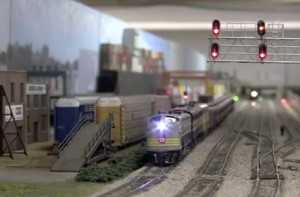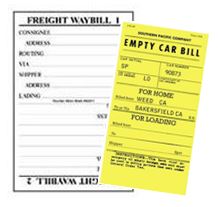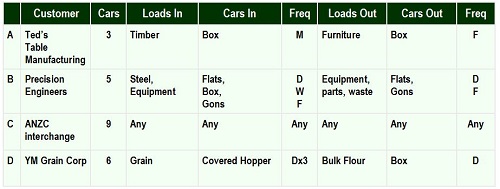Everything on model trains, model railroads, model railways, locomotives, model train layouts, scenery, wiring, DCC and more. Enjoy the world's best hobby... model railroading!
How to Add Interest to Your Model Train Operations
 It is easy to get bored with a basic oval track layout with train movements being so limited. However, this doesn’t need to be the case if more track is added. With a more interesting track configuration it is possible to simulate the day-to-day activities of a real railroad. And, that’s where the stimulation, action, and challenges can really come into play.
It is easy to get bored with a basic oval track layout with train movements being so limited. However, this doesn’t need to be the case if more track is added. With a more interesting track configuration it is possible to simulate the day-to-day activities of a real railroad. And, that’s where the stimulation, action, and challenges can really come into play.
I said “challenges”, because the job on any railroad (real or scale model), is to operate the railroad as efficiently and effectively as possible. After all, without efficiency, a real railroad would not only lose customers, but potentially become unprofitable.
Every aspect of a railroad needs to operate efficiently including:
— Picking up freight
— Moving passengers
— Assembling trains
— Car delivery to consignees
— Sorting freight cars on arrival based on planned destinations
— Returning empty cars
So for realistic railroad operations, trains are scheduled with the purpose to make profit for the railroad. Without profit the railroad wouldn’t exist. So, cars on spurs need to be efficiently organized and accessible (too many cars on a spur can cause operational issues and delays).
The pickups and drop offs can be controlled on a model railroad with the aid of car cards. The trains would go from one destination to another picking up and dropping off passengers or freight. This all needs to happen to a schedule so as not to delay passengers, or delaying freight from getting delivered, or delaying other trains.
Too many cars waiting around doing nothing could send the railroad broke. However, not everything on a railroad moves all the time. Even though trains are generally on their way to somewhere, cars typically:
— Wait near an industry for loading/unloading
— Wait to be picked up at an interchange
— Wait for the next train in a classification yard
— Wait on empty car tracks
As with any business, a railroad needs to be customer focused:
— The railroad must understand and meet the needs of customers
— The track capacity needs to be clearly understood
— The inputs and outputs by commodity and car type need to be known
— The railroad should know the frequency (and quality) of customer needs to calculate the required frequency, number, and train type
— To maximize efficiency, the locations and industries will need names.
The loads and traffic needs of a small switching layout might look something like this –
For more information and ideas on train operations; login to the Online Model Train Club and there’s a special Category called “Operation”, with plenty of ideas for interchanging cars, switching a siding, run-around operation, factors determining the operational capacity of a railroad, and various other operation related topics.
You won’t necessarily require a large layout for realistic railroad operations:
— With a switching layout, the cars move on to (or off) the layout
— All traffic will be yard to staging or staging to yard
— Traffic needs to be logically arranged in context
— An Interchange track will add operational variety and complexity
Ways to Represent Car Movements
Here are some options:
— Waybills and car cards (single and multiple destination)
— Color-Coded Tacks
— Switch Lists (Computerized)
— “Car-for-Car” Replacement
— Prototype paper work
It is over to you what system you opt for. Stick with one system or use a mix to add interest and variety to your operations.
 Waybills typically use one card for each car on the layout to determine the destination and movement of each car.
Waybills typically use one card for each car on the layout to determine the destination and movement of each car.
You can set the perimeters such as whether the engineer or brakeman has the responsibility for updating the train’s documentation. Decide whether you’ll use card cards, waybills, or a combination system. Decide if there are any special instructions to go with the car.
This is where model railroad operation can really become interesting, because each train or car can function like pieces (or tokens) on a giant playing board (your layout). Waybills can be shuffled (like cards) to control the game (destinations, loads etc).
All going well; each car will arrive at the correct destination on, or about, the scheduled time. If not, the whole railroad could suffer delays. Too many delays and this will affect the railroads profitability.
The key to all this is to have fun, regardless of whether you want to take operations seriously, or just watch your trains go around the track. A little complexity can give a model railroad purpose, but too much complexity can lead to frustration. If nothing else; hopefully this article has stressed the importance for a railroad to have a purpose, and the reasons and logic why trains and individual cars are moving around the track, or perhaps why they are sitting on a siding.
















